A recent survey measuring employee engagement found that a staggering 71 per cent of employees in Australia are not engaged in their jobs, and only one in five leaders are engaged. The Gallup Report cites that as much as 15 per cent of employees are disengaged, which puts Australia amidst the lower end of the developed world when it comes to employee engagement and satisfaction. This, in turn, has a negative impact on the mental health of Australians, because of a lack of psychologically safe workplaces.
Employees are giving businesses their time consistently but not their best efforts. Individuals live in a world that does not encourage authenticity. Companies are only beginning to understand the importance of inclusivity and psychological safety and the correlation this has on overall productivity and employee engagement. Keeping talent engaged at work means providing the platform in which to harness employees’ specific strengths. A way to address this lack of commitment is through automation, freeing up employees’ time to focus on more challenging and meaningful business-critical work.
Measuring employee engagement

Engagement is personal and subjective and requires a customised approach to measurement. Annual surveys are no longer efficient. Data has to be valid, in real-time and measured more than once a year. Employee engagement is an overall business issue and no longer confined to just HR. Culture and engagement are top challenges businesses face and which is detrimental to business growth. More businesses are recognising that, with the advent of digitisation and social media, companies are needing to become more transparent about their organisational processes and employee engagement forms part of that spotlight. Most companies have an inadequate programme to measure and improve employee engagement, which is a systemic problem for businesses.
Employees are now becoming internal customers, with a nascent shift in power from employers to employees. People drive culture in the workplace from management level down, yet it still cannot be disseminated through the company. Defining a company’s culture has to now include flexibility, empowerment, development and mobility, as employee motivation has shifted through the years. Cultivating a substantial and measurable impact assessment is where employers can begin to measure employee engagement. We can see this engagement with the following:
- Making the retention of employees the number one priority before any evaluation can occur.
- Putting together assessment programmes and tools to assess the current culture in real-time.
- Cultivating a feedback culture, where employees’ feel heard. An example of this is through coaching sessions.
- Teaching leaders how to be authentic and empathetic to employees.
- Gaining information from the millennials, whose values will shape the organisation’s culture in the coming years.
- Simplifying the work environment so that employees are not working 24/7.
Contributing to employee engagement means giving employees autonomy while aligning employees toward the overall business strategy. Creation of a continuous culture of engagement needs to take place. The only way organisations will recognise if they’ve reached a high level of employee engagement is when employees care about the company and align themselves to achieving their personal, organisational goals. This level of care only develops when employees are satisfied and when they trust that their employer supports them.
Automation for human resource systems

Human resource is an area that is ripe for automation. Automating HR processes improves efficiency, reduces risk, and most importantly, retains the talent that businesses need to thrive in a competitive environment. Agile companies know the importance of organisational development and a significant component is employee engagement in which to enhance productivity. Automating menial tasks boosts the morale of employees, freeing them up to do more strategic work. Additional business benefits include:
- Increases data security with optimal back-up systems and reduces errors from manual operations.
- Improves productivity and increases employee engagement, as employees can focus on more challenging tasks.
- Process development, e.g. automating payroll procedures.
- Creating consistency across the business, which improves workflow.
What can be automated:
- Leave processes.
- Timesheet tracking.
- Performance appraisals.
- Onboarding of new staff.
Automating HR processes scales your business and shepherds’ staff into a new landscape.
Employee engagement and automation
One relies on applicable disruptive technology as a critical driver to employee engagement. Therefore, many organisations are moving toward embracing new communication and collaboration technologies. HR is a crucial division within an organisational structure as it’s the interface between the employer and employees. HR facilitates employee engagement and helps to maintain healthy relationships., which is why HR departments are relying more heavily on automation to assist with employee engagement to make the process more efficient and informative. In addition to automating HR processes, making it easier for employees to submit requests like leave, and automating payroll procedures which make salary and overtime payments that much easier and reliable; is the employee engagement portal. Automation supports employee engagement by:
Facilitating learning and growth initiatives
Interactive training sessions and workshops through online courses or webinars help support the personal development aspirations of employees, at a time that is convenient for them.
Boosting employee performance
Through tracking of workflow and monitoring to ensure the employee meets company standards, with features like efficient scheduling.
Providing effective communication
Open and transparent communication is affected throughout the business and offers employees interactive ways of keeping in touch with their peers, building a capable team. Many organisations are relying on chatbots to facilitate helpdesk queries.
Creating a sense of teamwork and collegiality
Recognising every employee as an integral part of the team.
Providing an effective feedback system
Employee feedback processes are often manually viewed by HR, which is often time-consuming, and there is a risk that vital insights can be missed and overlooked. Automated feedback tools provide more data on employees’ overall feelings, and therefore brings more ideas which can be used to measure staff engagement. These feedback sessions apply to the entire organisation and not exclusively to HR teams and leaders.
Automation helps to create a more engaged workforce, which ultimately impacts the profitability of the business as productivity increases. Automation provides tools which serve to increase the organisation’s ability to communicate effectively, offer complete transparency, create collaboration within all sections of the organisation and recognise and reward employee achievements. Businesses that actively work towards building a culture of employee engagement through the use of emerging technologies will undoubtedly see a positive impact on bottom-line metrics.
The underlying importance of employee trust

Employees who trust their employer are more fully engaged in the workplace. Effective workforce management with employee engagement at the forefront assists in creating trust. Trust is a difficult attribute to measure, but one that can make or break a business. Trust in the workplace is a foundational building block and a delicate dynamic to maintain. Trust can take a long time to develop, and if they break the trust, it is disregarded it in an instant. Earning employees’ trust through consistent practices is vital to be a good leader within a successful organisation. Employee trust is essential for building:
- Morale and motivation;
- Teamwork and collaboration;
- Improved efficiencies;
- Ethical decision-making; and
- Loyalty and the willingness to stay in the organisation.
Building a culture of trust involves taking advantage of technology which serves to make employees’ workday easier, providing the impetus to do more rewarding work.
Manual, repetitive work does not boost morale or foster employee engagement. Employees who get the impression that they don’t add much value to the workplace will not want to do more. Due to this, automation plays such a key role in employee engagement. In the HR space, automation of HR processes and automating payroll procedures creates a sense of efficiency which employees find reliable. Businesses can earn employees trust this way. Additionally, the eradication of manual tasks frees up employees to focus on creativity and innovation, which are hugely empowering and motivating, and which is the key to business success and longevity. Creativity has been shown to harness growth by adopting more of the market share, driving innovation and therefore, revenue growth.
Automation also provides accountability across the organisation. As an example, employees can set up automated requests for report collection to complete projects, instead of time spent running after people. Additionally, project information is stored centrally, making it easily accessible.
Employee engagement is the lifeblood of a business, especially in an applicant-driven economy where employees can quickly jump ship at any time to explore other opportunities. Companies that embrace technology as a means towards employee engagement initiatives will ensure that employees are excited to come to work and will continuously strive towards meeting the goals of the company every day. An automated benefits platform creates value for employees by recognising their individuality and makes everyone’s lives easier. Additionally, staying in-sync with advanced technology forms part of an organisation’s value proposition, supporting employees in their career aspirations. Automation serves to empower, elucidate, and envision the future of work.
To book a demo of Tambla’s solution, visit https://www.tamblawfm.com.au/solutions/workforce-management/.




